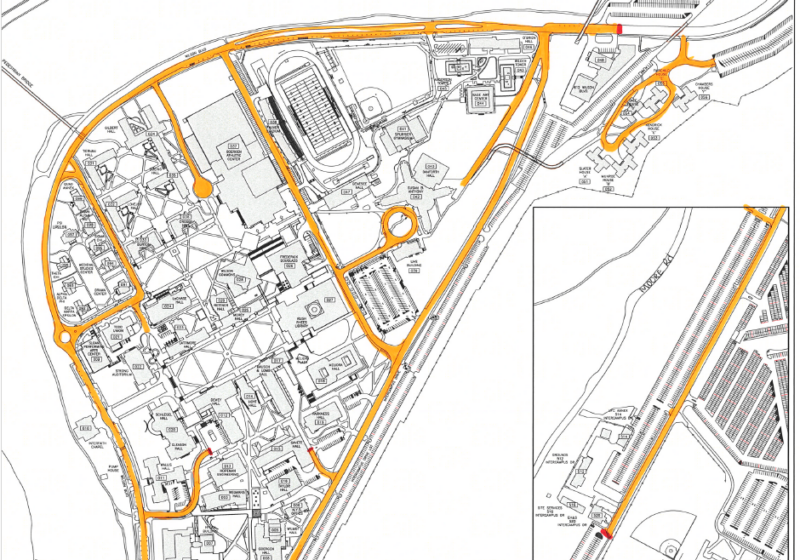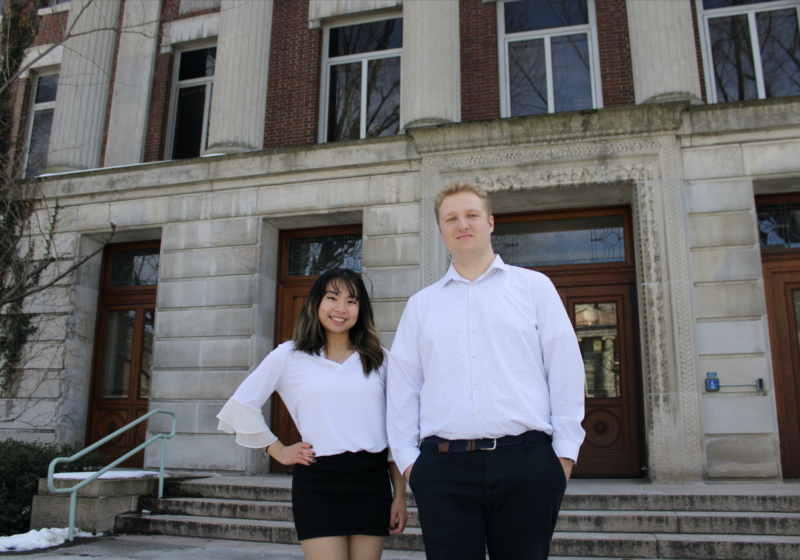Associate Pharmacology and Physiology Professor Alan Smrcka and Biomedical Engineering Assistant Professor James McGrath recently received the first two $100,000 grants from the Discovery Concept Fund.
The fund is a program developed as the fruit of a partnership between Johnson & Johnson and the UR Medical Center.
As scientific funding becomes more and more difficult to come by, researchers are compelled to demonstrate that their research will have tangible and beneficial impact in the world.
McGrath’s recent research in bionanotechnology focuses on protein filters, an integral part of future blood analyzing machines. For blood analysis applications in human patients, the filters will require tiny fractions of the blood required by current technology.
“The filters work by the simplest mechanism imaginable and are roughly 50 silicon atoms thick, making them the world’s thinnest functioning filters,” said McGrath. “Despite being so thin, these filters are still strong enough to be used in practice.”
McGrath mentioned that filters are used in the majority of fundamental processes in research and industry and therefore have a potentially great number of applications. Specifically, the filters might be a vital component in a machine used to replace failed kidneys.
“Electrical and Computational Engineering Professor Phillippe Fauchet and his student Chris Striemer are the inventors of this remarkable material and came to us hoping to find a biological application,” said McGrath. “Together, Striemer and my student Tom Gaborski found that the material works very well as a protein filter.”
McGrath is happy with his current team. “One of the by-products of working with Fauchet is that I’m now thinking of new ways to use silicon fabrication techniques in our other work, which is typically focused on questions in cell biology,” McGrath said. “As I learn about microfabrication techniques through our work, it’s becoming easier to imagine testing ideas about cell function using the filters.”
Similar to McGrath’s partnering of biology and engineering technology, Smrcka uses computational models in hopes of developing a therapeutic approach to regulating and changing cell physiology.
According to Smrcka, his research titled “Molecular Mechanisms of Signal Transduction,” carries an overall objective to identify and control the physiological factors within the cell that cause cardiovascular disease and cancer.
“I have always been the type of person that likes to take things apart and see how they work,” said Smrcka. “I was very interested in finding molecules that would act on G protein switches.”
G protein receptors act as dispatchers sitting on the surface of a cell. When they come in contact with hormones such as adrenaline or serotonin, they send a message that activates a certain G protein. This then sends the official call of action to the human body that works to incite a physiological change.
“The pharmaceutical industry screens millions of compounds to find molecules that bind to specific receptors, however another approach to screening is to use computational methods to screen virtual libraries of organic molecules that bind to a specific target,” said Smrcka. “I was very lucky to have computational chemist Jose Font join our lab to assist with this project.”
With obvious appreciation for the Discovery Concept Fund, both Smrcka and McGrath emphasized the importance of collaboration within research as well as the necessity for both pure and applied research.
“You never know how fundamental understanding from basic research can lead to exciting new breakthroughs. We have been doing very basic research on G protein systems at the molecular level for about 15 years without worrying about whether there would be a practical application,” Smrcka said. “Ultimately, it is very satisfying to see this research develop into something that could be useful for human health.”
The future applicability of research to solve common health problems was a major reason why these scientists received their grants.
Both scientists believe that research is absolutely essential to their fields.
“I can’t see a day where the bioengineer job is separable from research duties,” McGrath said.
“Bioengineering will never be like making paper clips, so it is both fantastic and vital that most of our BME undergraduates get involved in research because biology is so complicated.”
McGrath and his associates have high hopes for the future of their labs, especially with their newly-acquired grant. “Medicine and biology are becoming increasingly technical and systems-based,” McGrath said. “I think the future of Biomedical Engineering is as big as the future of medicine itself, and that is huge.” Welzer can be reached at bwelzer@campustimes.org





